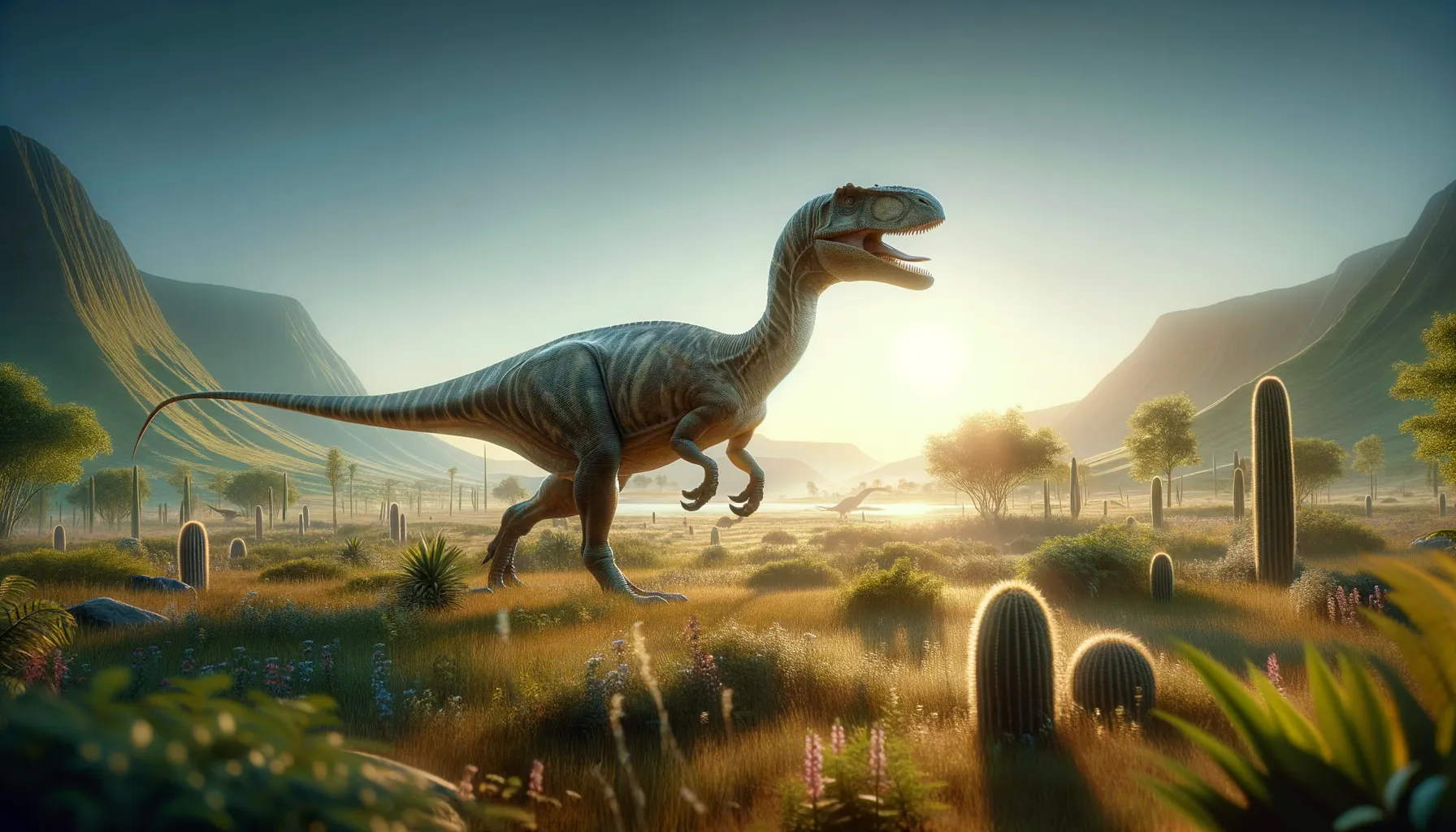
Callovosaurus
Jurassic Herbivore with Steady Wanderlust
Period
Jurassic
Length
About 3-4 meters in length.
Height
Around 1 meter tall at the hip.
Weight
Approximately 150-200 kg.
Callovosaurus was a small herbivorous dinosaur that roamed the Earth during the Jurassic period. Known for its lightweight frame and long, slender legs, it was well-suited to foraging across vast stretches of land. Its fossilized remains offer key insights into the diverse fauna that existed in prehistoric times. As a plant-eater, it likely played a crucial role in maintaining the ecological balance of its environment.
Diet
Callovosaurus was a herbivore, feeding primarily on ancient ferns and cycads. Its beak-like mouth was well-suited for nipping off vegetation, allowing it to consume a variety of plants efficiently.
Hunting
As a herbivore, Callovosaurus did not hunt. Instead, it foraged for its plant-based diet throughout its habitat, relying on keen senses to avoid predators.
Environmental challenges
Callovosaurus faced a landscape filled with large predators, necessitating constant vigilance and quick movements to avoid being preyed upon. Climate fluctuations during the Jurassic period may have affected vegetation availability, requiring adaptability in finding food sources. The competition for resources with other herbivores likely also posed a significant survival challenge.
Speed
Likely slow, adapted for steady, long walks.
Lifespan
Estimated to be around 20-30 years.
First discovery
First discovered in the late 19th century in England.
Fun Facts
- Callovosaurus lived during the Middle Jurassic period, around 163 million years ago, in what is now known as Europe.
- The name Callovosaurus means 'Callovian lizard,' named after the Callovian age of the Jurassic period.
- Fossils of Callovosaurus have been found in England, making it one of the few dinosaur species known from this area during its time.
- It was a relatively small dinosaur, estimated to be about 2.5 meters (8 feet) long.
- Callovosaurus was an herbivore, which means it only ate plants, using its beak-like mouth to trim vegetation.
- There is only one known species of this dinosaur, Callovosaurus leedsi, named in honor of the collector who first discovered its fossils, Alfred Leeds.
- The discovery of Callovosaurus helped scientists understand more about the diversity and distribution of plant-eating dinosaurs in the Jurassic period.
Growth and Development
Callovosaurus likely experienced rapid growth during its juvenile stages to quickly reach a size less vulnerable to predators. It maintained a relatively consistent growth rate into adulthood which was essential for survival. Fossil evidence suggests that the development of strong legs was key to its ability to foray for food efficiently.
Habitat
Callovosaurus inhabited lush, vegetated landscapes, rich in diverse plant life essential for its diet. These environments provided both food and a degree of cover from predators. The terrain likely varied from open plains to forested areas, offering a range of microhabitats within its ecosystem.
Interaction with other species
Callovosaurus shared its environment with various herbivorous and carnivorous dinosaurs. Social interaction may have included flocking with other herbivores for protection. It also actively avoided predatory dinosaurs, likely employing camouflage and quick movements in its interactions to reduce encounters.
Natural lifespan
Its natural lifespan was estimated to range between 20 to 30 years.
Reproduction
Callovosaurus likely reproduced by laying eggs, as was common among dinosaurs. Nesting sites may have been communal to provide increased protection against predators. Fossils of juvenile Callovosaurus suggest a care pattern that ensured their offspring reached maturity.
Social behaviour
Callovosaurus might have lived in small groups for mutual protection and efficient foraging. Its social structure could have included coordinated movement as herds to safeguard against predators. Limited evidence suggests they may have displayed some basic social interactions among group members.
Fossil locations
Fossil remains of Callovosaurus have primarily been found in Oxfordshire, England. These discoveries have provided detailed insights into its physical characteristics and habitat adaptations. Additional remains may yet be uncovered which could further illuminate its distribution and ecological role.
